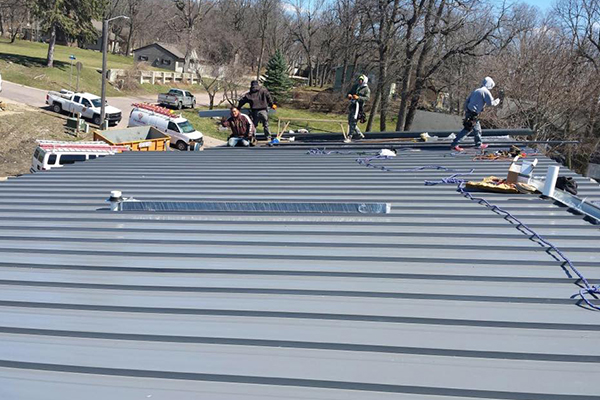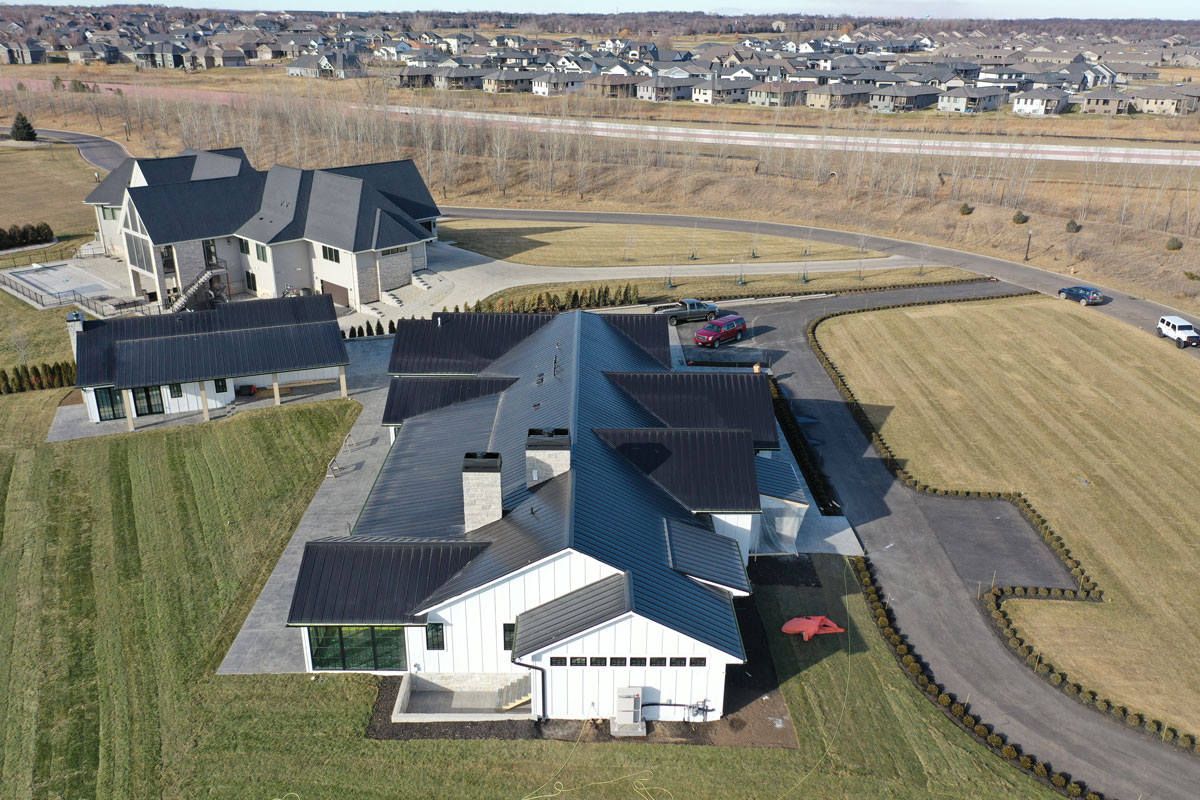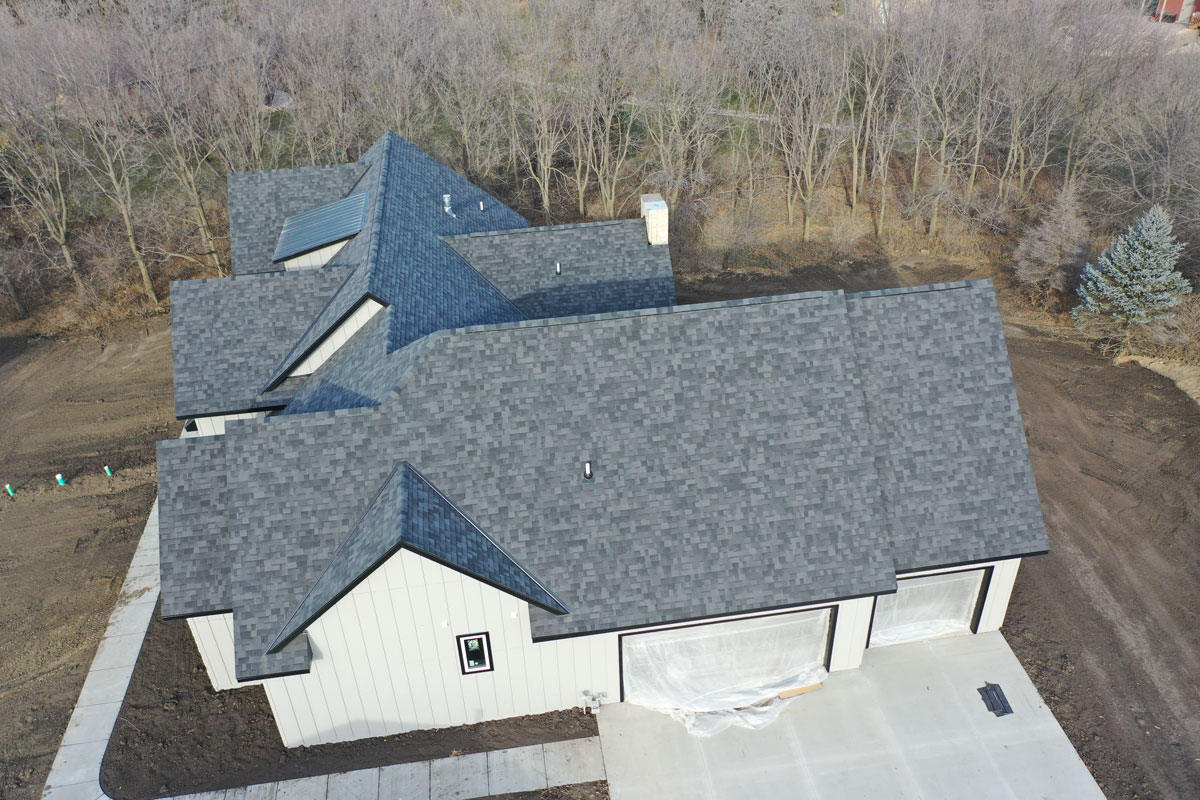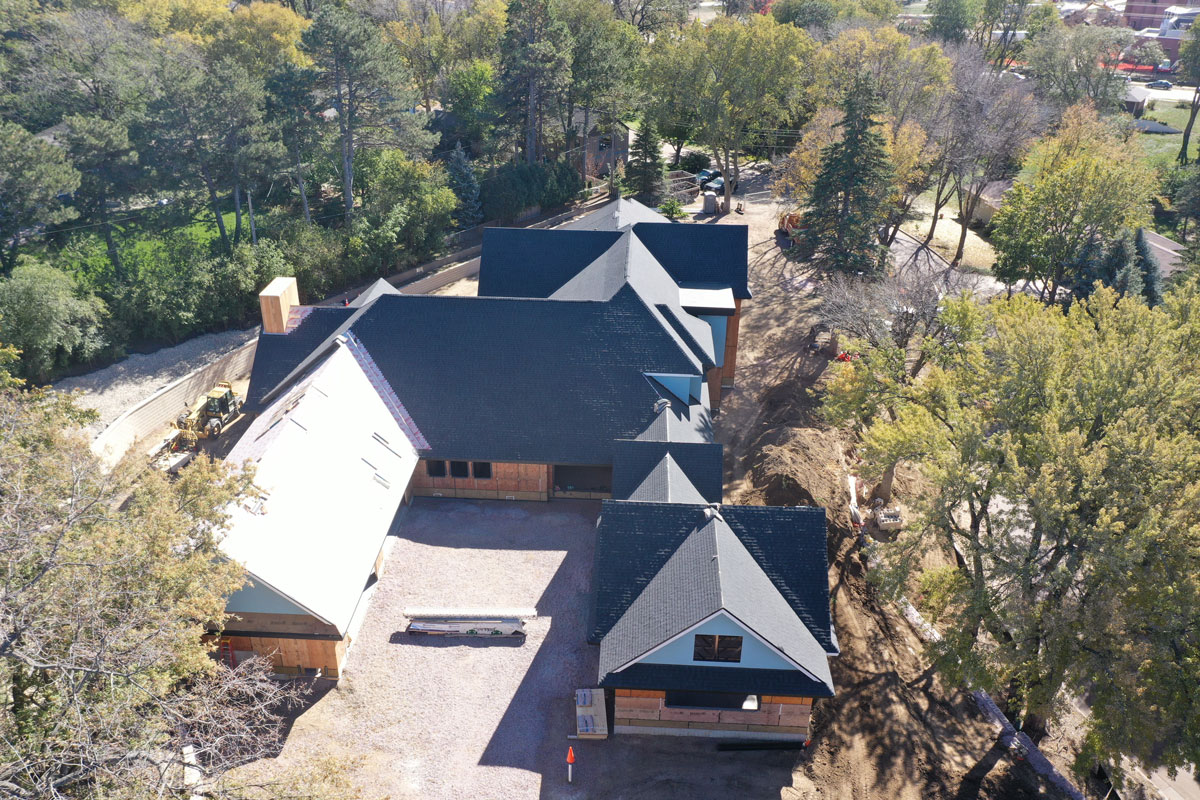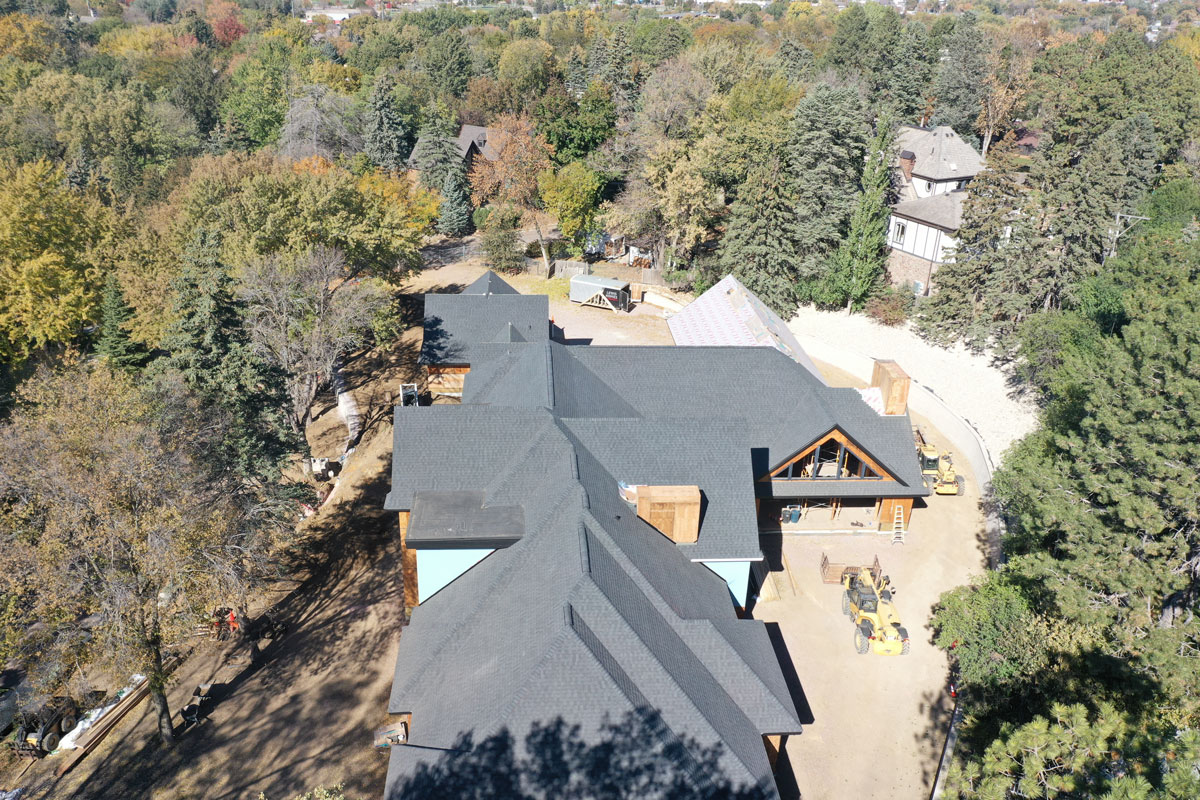After a storm hits Sioux Falls, dark skies and howling winds leave homeowners with damaged roofs. The damage particularly affects residential roofing in Sioux Falls. The storm wreaks havoc on residential properties, causing various damages, especially to roofs. Understanding insurance claims is crucial for homeowners dealing with the aftermath in these challenging times.
This blog post discusses various aspects of filing insurance claims for residential roofing in Sioux Falls.
Guide to Insurance Claims | Residential Roofing in Sioux Falls
Assessing the Storm Damage
Homeowners must first assess the extent of the storm damage to their residential roofing. A thorough inspection is essential to identify the issues that may have arisen from the storm. This can include issues such as missing shingles, leaks, or structural damage.
Pay close attention to the condition of the shingles, gutters, and the overall integrity of the roof structure. If the storm was severe, there might be hidden damage that isn’t immediately visible. So, consider hiring a professional roofer to conduct a detailed inspection.
Documenting the Damage | Residential Roofing in Sioux Falls
The importance of detailed documentation cannot be overstated when preparing an insurance claim. Take photographs of the damaged areas and capture the full scope of the destruction. These visual records will serve as invaluable evidence during the claims process to provide insurers with a detailed view of the storm’s impact on your residential roofing.
Include close-up shots of specific damage and wide-angle shots to show the overall condition of the roof. Additionally, keep notes on the date and time of the storm, weather conditions, and any immediate steps taken to prevent further damage.
Contacting Your Insurance Provider
Once the damage has been assessed and documented, contact your insurance provider promptly. Inform them about the storm damage to your residential roofing in Sioux Falls and initiate the claims process.
Be prepared to provide details such as the date and time of the storm, a description of the damage, and any immediate steps taken to mitigate further harm. Most insurance companies have a limited window in which you can file a claim after a storm. So, it’s crucial to act quickly.
Meeting with the Insurance Adjuster
Insurance companies typically assign an adjuster to assess the damage. When scheduling a meeting with the adjuster, be present during the inspection. Point out specific areas of concern and share your documentation.
The goal is to ensure the adjuster understands the storm damage to your residential roofing. Having a professional roofer present during the inspection can also be beneficial, as they can help explain technical details and advocate for necessary repairs.
Understanding Your Insurance Policy
Before proceeding with the claims process, it’s crucial to have a clear understanding of your insurance policy. Familiarize yourself with the coverage limits, deductibles, and any exclusions that may impact your claim. Knowing your policy will empower you to manage the claims process more effectively.
For instance, some policies cover only certain types of damage or have specific requirements for maintenance and repair. Being aware of these details can help you avoid surprises and make sure that your claim is processed smoothly.
Types of Roof Damage Covered by Homeowners Insurance
Homeowner’s insurance typically covers a range of roof damages resulting from storms. However, it’s important to know the specifics of what your policy includes. Commonly covered damages include those caused by hail, wind, fallen trees, and lightning. Each of these types of damage can significantly impact the integrity and safety of your home.
Hail damage often results in dented or cracked shingles, which can compromise the waterproof barrier of your roof. Wind damage might involve shingles being blown off or loosened, exposing the underlying structure to the elements.
Additionally, fallen trees or branches can cause severe physical damage and puncture the roof or cause structural weaknesses. Although less common, lightning strikes can result in fires or severe structural damage that needs immediate attention.
However, it’s essential to note that damage due to wear and tear or lack of maintenance is typically not covered by homeowners insurance. Regular maintenance and timely repairs are important to ascertain that your roof remains in good condition and that any potential claims are not denied due to neglect.
Understanding the types of roof damage covered by your policy can help you file a more accurate and effective claim. This helps you receive the compensation needed to repair or replace your roof. Always review your policy details and consult with your insurance provider to clarify any uncertainties about your coverage.
Obtaining Repair Estimates | Residential Roofing in Sioux Falls
After the initial assessment, gather estimates from reputable roofing contractors in Sioux Falls. These estimates should detail the scope of the necessary repairs, including materials, labor, and additional costs. Present these estimates to your insurance company to facilitate a smoother claims process. Ensure that the estimates are detailed and itemized. This will provide a clear picture of the repair costs and help justify your claim to the insurance company.
Approval and Disbursement of Funds
Once the insurance company reviews your claim and approves the necessary repairs, they will disburse the funds to cover the costs. It’s important to note that insurance companies may disburse payments in installments. This entails the initial amount provided for immediate repairs and subsequent payments released as the work progresses. Stay in communication with your insurance provider to understand the disbursement schedule and ensure that funds are available when needed.
Selecting a Reliable Roofing Contractor | Residential Roofing in Sioux Falls
Choosing a reliable roofing contractor is a critical step in the recovery process. Look for contractors with experience in residential roofing in Sioux Falls and a proven track record of quality work. Verify their credentials, licenses, and insurance to ensure they can handle the repairs.
A reputable contractor will complete the necessary work but also assist in handling the insurance claims process. They can provide detailed repair estimates, work with the adjuster, and guarantee that all repairs meet the necessary standards.
Completing the Repairs
Regular communication with the contractor is vital to staying informed about the progress of the repairs. Keep a record of the work completed, including receipts and invoices. These documents may be requested by the insurance company for reimbursement. Make sure that the contractor follows the repair plan and addresses all documented damage. After the repairs are completed, conduct a final inspection to confirm that all work has been done to your satisfaction.
Finalizing the Insurance Claim
As the repairs close, it’s time to finalize the insurance claim. Provide the insurance company with documentation of the completed work, including photographs and receipts. This detailed documentation proves that the funds disbursed were used for the intended repairs and facilitates the finalization of your claim. Verify that you receive a final settlement statement from your insurance provider, and they detail the payments made and the remaining balance, if any.
Insurance After a Storm | Residential Roofing in Sioux Falls
Harvey’s Five Star Roofing is a locally owned company serving Sioux Falls. Whether you require roof repairs or a brand-new roof, our skilled team completes the job promptly and at an affordable rate that aligns with your budget. We are fully licensed, bonded, and insured. Also, we back our services with an unbeatable lifetime warranty, ensuring the longevity and quality of our work.
FAQs
What does insurance cover in a storm?
Insurance typically covers damages caused by wind, hail, fallen trees, and lightning during a storm. It does not usually cover damage resulting from wear and tear or lack of maintenance.
How long does insurance have to pay a claim in Sioux Falls?
In Sioux Falls, insurance companies must typically pay a claim within 60 days of receiving all necessary documentation, with a payment deadline of 30 days post-approval.
Is the weight of snow covered by insurance?
Yes, most homeowners insurance policies cover damage caused by the weight of snow, ice, or sleet. This can result in roof collapse or other structural damage.
What is the time limit for hail damage insurance claims in Sioux Falls?
In Sioux Falls, the time limit for filing a hail damage insurance claim is typically 12 to 24 months from the date of damage, depending on the insurance policy terms.
How do storm damage insurance claims work?
Storm damage insurance claims begin with assessing and documenting the damage, contacting your insurance provider, meeting with an adjuster, and then proceeding with repairs after claim approval. The process concludes with the finalization of the claim once repairs are complete.
How do I make a storm damage insurance claim?
To make a storm damage insurance claim, assess and document the damage. Then, contact your insurance provider promptly, provide detailed information, meet with the insurance adjuster, and work with a reliable contractor to complete the necessary repairs. Finally, submit all required documentation to finalize the claim.

